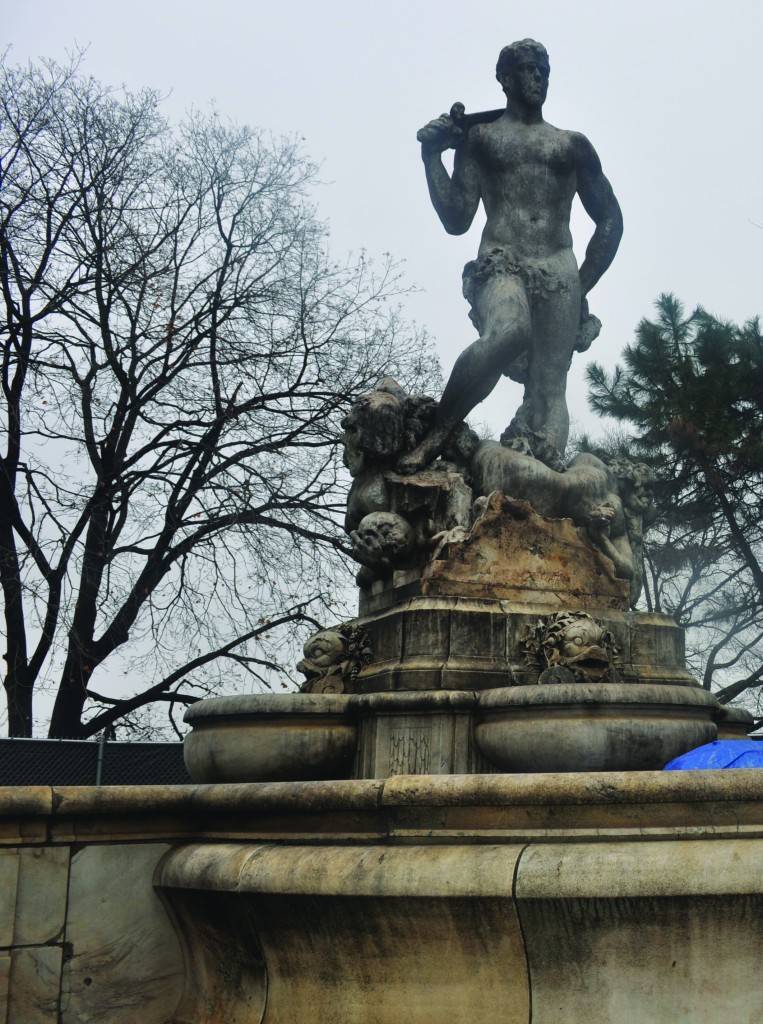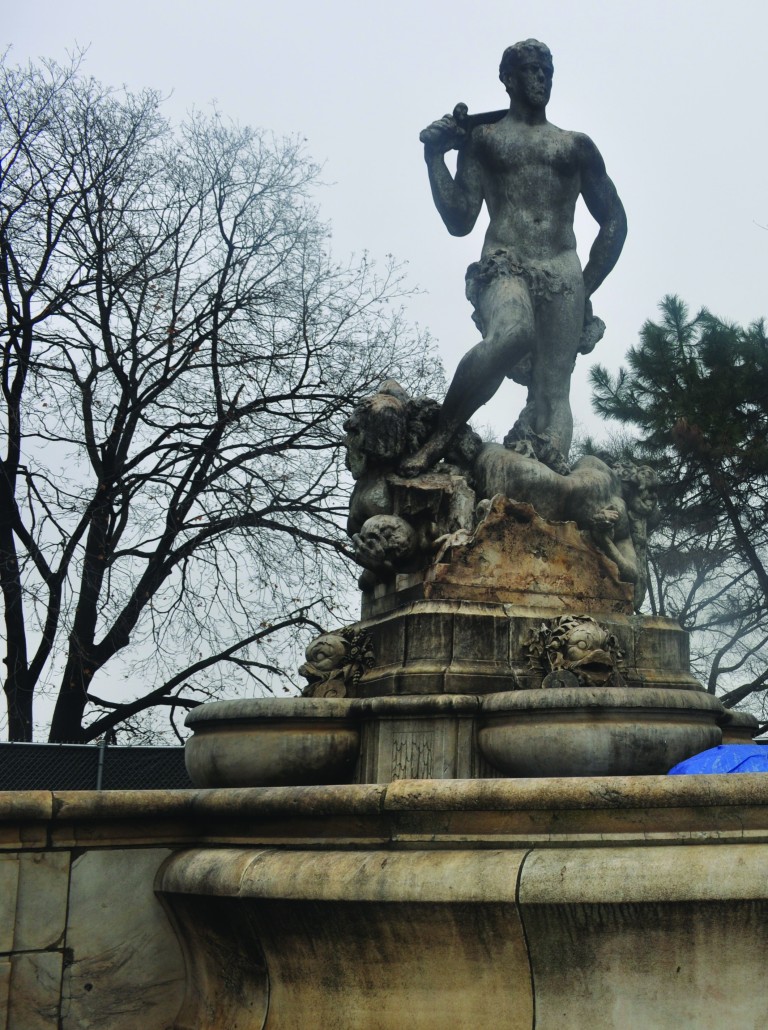
The “Civic Virtue” statue stood outside Queens Borough Hall for more than 70 years before it was moved to Brooklyn in December. File Photo
Irate that the city did not produce requested communication documenting why it moved the “Civic Virtue” statue from outside Queens Borough Hall to the private Green-Wood Cemetery in Brooklyn late last year, Whitestone resident and documentary filmmaker Robert LoScalzo filed a lawsuit last week with the hope it will result in answers for those up in arms over the artwork’s absence.
LoScalzo filed the suit against the city Department of Citywide Administrative Services, or DCAS, in Manhattan Supreme Court on June 26.
“We deserve some answers and deserve to see these communication records because I don’t think the whole story has ever been told,” LoScalzo said. “We’re owed that.”
The city removed “Civic Virtue” – a piece done by American artist Frederick MacMonnies in 1919 that depicts a nearly nude man with a sword, towering over two female figures – in December, despite calls from Community Board 9 and art historians to restore the statue and leave it on Queens Boulevard. DCAS loaned the statue to Green-Wood Cemetery, where some members of the MacMonnies family are buried.
Dedicated in 1922 and then placed outside City Hall in Manhattan, the statue was controversial from its inception, with women’s rights groups calling it sexist – a label echoed by now mayoral candidate Anthony Weiner, when he represented the area in the U.S. House of Representatives and Councilwoman Julissa Ferreras (D-East Elmhurst). Mayor Fiorello LaGuardia, a known critic of the statue, had the piece moved to Queens in 1941.
The removal of the statue this time around drew vehement criticism from legislators and civic leaders throughout Queens, including Councilman Peter Vallone (D-Astoria), who noted that it was done while they were preoccupied with the aftermath of Hurricane Sandy. Vallone, and other politicians – including Councilwoman Liz Crowley (D-Middle Village), stressed that the city Design Commission ruled at its November meeting to move the statue – but they said they and other residents never heard about the meeting, in part because communication may have gotten lost in the chaos of Hurricane Sandy.
“Somehow, the cemetery in Brooklyn knew about it, they showed up, but the people in Queens, we never knew about it, never” Vallone said at a press conference in December.
LoScalzo, who is also currently working on a documentary film about Willets Point, filed a Freedom of Information request with DCAS days before the statue was removed in December, asking the city to provide all communication between DCAS, the cemetery and any contractors involved in the statue’s removal. He said they provided him some “benign” documents, such as the loan agreement with Green-Wood, but nothing that explained the statue’s removal.
“What are they hiding?” LoScalzo asked. “What’s so incendiary in these records that the public isn’t being shown them?”
While the city did not respond to a request for comment for this article, LoScalzo said it denied his FOIL request because the documents he wants “consist of attorney-client communications.” Additionally, he said DCAS argued it is exempt from providing the documents because they constitute inter-agency communications.
LoScalzo refutes both of these claims, and, to back up these arguments, he reached out to the state Committee on Open Government, which wrote a letter of agreement with LoScalzo on June 10.
By Anna Gustafson

